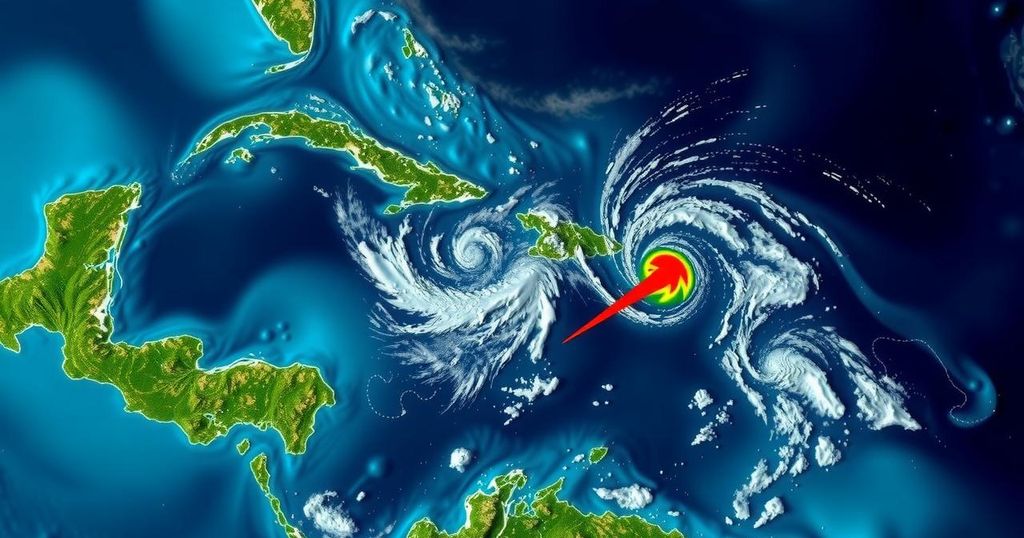Tropical Storm Sara: Impending Threat to Honduras Amidst Severe Weather Patterns

Tropical Storm Sara has formed over the Western Caribbean, threatening northeastern Honduras with significant rainfall and flooding. With its current trajectory, Sara may impact the region severely, reminiscent of past hurricanes that caused catastrophic damage. The storm highlights the growing frequency of intense storms within the context of climate change, with significant implications for local communities in Honduras still recovering from previous disasters.
On November 14, 2024, Tropical Depression 19 evolved into Tropical Storm Sara over the unusually warm waters of the Western Caribbean, marking the 18th named storm of the 2024 Atlantic hurricane season. This hurricane season has been notably active, surpassing average statistics with 11 hurricanes and five major hurricanes thus far. Sara is anticipated to impact Honduras, specifically the northeastern region, by potentially causing significant rainfall of up to 20 inches, leading to catastrophic flooding and mudslides. Currently located approximately 50 miles off the coast, Sara is moving westward with sustained winds of 40 mph, with landfall expected imminently. The forecast models indicate that Sara will likely remain close to the northern Honduran coast as it progresses westward. Conditions in the atmosphere suggest there is potential for slight intensification, yet the complex geographical terrain may disrupt this process. The storm’s slow movement alongside Honduras presents significant risks, especially concerning rainfall accumulation in mountainous regions, thus exacerbating the possibility of devastating consequences from flash floods and landslides. Historically, late-season tropical cyclones have inflicted severe damages in Honduras. Notably, Hurricane Mitch, which peaked in October 1998, stalled over the region, leading to catastrophic rainfall and resulting in over 11,000 fatalities. More recent hurricanes Eta and Iota followed in 2020, causing extensive damage, loss of life, and economic setbacks that compounded pre-existing vulnerabilities. The United Nations Economic Commission for Latin America reported that these storms adversely affected nearly half of Honduras’s population and severely impacted the national economy, ultimately contributing to increased migration pressures toward the United States.
The recent developments with Tropical Storm Sara highlight a concerning pattern in the Atlantic hurricane season, characterized by a surge in tropical activity. The region’s warming sea temperatures are increasing the likelihood of more frequent and intense storms, a phenomenon often associated with climate change. Furthermore, Honduras has a tragic history of severe hurricane impacts, particularly evident during late-season storms that stall over the region, causing extreme rainfall and flooding. This context underscores the potential severity of the impending effects of Tropical Storm Sara on a nation still reeling from prior catastrophic weather events.
Tropical Storm Sara represents a significant and potentially devastating threat to northeastern Honduras, following a hyperactive Atlantic hurricane season. Given the region’s history of catastrophic storms, the anticipated heavy rainfall raises alarms about flash floods and landslides. The ongoing challenges posed by climate change make it imperative for affected regions to remain vigilant and responsive to the evolving weather patterns that exacerbate existing vulnerabilities. Ultimately, the trajectory and consequences of such storms emphasize the importance of disaster preparedness and climate resilience in vulnerable communities.
Original Source: yaleclimateconnections.org







